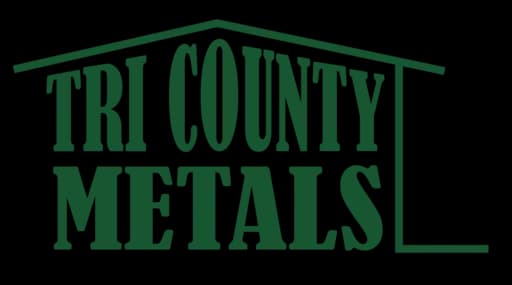Roof Inspection
Residential Roof Inspection Services in Sarasota, FL and Surrounding Areas
Our 18-point Tip Top Roof Check-up goes beyond your typical roof inspection because, just like you, we live right here in Sarasota. We understand the challenges homeowners face when dealing with insurance claims, hurricane season, and that dreaded AC bill. Whether you need to find hidden damage, gather documentation for real estate / insurance purposes, or just want some peace of mind next hurricane season, give us a call and we'll get you on the schedule.
Tip Top Roof Check-up
$199 $169
Real-estate Inspection
$199+
Tip Top Roof Check‑up
Our 18‑point inspection helps catch small issues before they become big problems. Choose a category below to see what we check and why it matters.
You’ll get a written summary of findings, photos where helpful, and a clear plan to extend the life of your roof—or a straight‑shooting estimate if replacement makes more sense.
Interior Inspection
We look for the earliest signs of moisture where it shows up first—ceilings, walls, and around penetrations.
Check for signs of water and moisture
Why we check this: Discoloration or damp spots inside often appear before exterior leaks are obvious. Catching it here can save drywall and insulation.
Stains in the ceiling, wall, and windows
Why we check this: Brown rings, bubbling paint, or warping trim are classic leak indicators and help us trace the source from inside to out.
Attic Inspection
Heat, humidity, and hidden leaks start in the attic. Proper ventilation and dry decking add years to a roof.’s life.
Visual inspection for water damage
Why we check this: We look for darkened sheathing, moldy insulation, and rusted fasteners—early signs your decking has been wet.
Inspection of attic ventilation
Why we check this: Balanced intake and exhaust prevents heat buildup and moisture that can shorten shingle and underlayment lifespan.
Notify homeowner of any wood rot, insect activity, or fungus‑like growth we spot while inspecting
Why we check this: Structural or biological issues in the attic can spread and get expensive. Early awareness lets you plan repairs.
Exterior Inspection
This is the most thorough portion—everything from granule wear to flashing details and water pathways is reviewed.
Visible wood rot or insect damage
Why we check this: Compromised fascia/soffit invites leaks and pests and can undermine flashing.
Checkup of gutters and waterways for debris
Why we check this: Clogged gutters force water under shingles and against fascia, causing leaks and rot.
Damage caused by other trades
Why we check this: Dish mounts, cable fasteners, and old repairs can puncture the waterproofing layer.
Flashing around chimneys, vents, caps, etc.
Why we check this: Most leaks happen at transitions. Tight, sealed flashing is critical.
Nails and installation materials
Why we check this: Backed‑out or over‑driven fasteners create pathways for water.
Underlayment condition and material
Why we check this: The last defense against wind‑driven rain; damage here leads straight to the deck.
Gutter and downspout condition
Why we check this: We confirm water exits the roof system properly and away from the home.
Amount of granular wear and tear
Why we check this: Excess loss ages shingles quickly and exposes asphalt to UV damage.
Exposed fasteners and other roofing problems
Why we check this: Unsealed fasteners and open seams are quick wins to prevent leaks.
Moss, algae, and fungus‑like growth
Why we check this: Biological growth traps moisture and shortens roof life if left untreated.
Damaged caulking
Why we check this: Dried or cracked sealant fails under sun and rain. We note and recommend touch‑ups.
Why Do I Need a Roof Inspection?
Believe it or not, the average roof protects your home for about 20 years—but only if you stay on top of regular maintenance and address minor damage early. Ignoring small issues today can lead to major expenses tomorrow.
For most homeowners, spotting those early warning signs is difficult without training. That’s why scheduling a professional roof inspection is one of the smartest things you can do to protect your home and investment.
The cost of a roof evaluation is minimal compared to the cost of extensive roof repairs or a full replacement. Wouldn’t you rather detect a hidden leak or structural issue before it turns into an expensive problem?
Roofs Can Leak for Years Before You See Evidence
To add years of life to your roof, the National Roofing Contractors Association (NRCA) recommends two roof inspections each year by a licensed roofing professional to avoid premature roof failure. Studies show that small leaks are the most damaging kind—when undetected, they can silently erode your home’s structure, much like an undetected illness.

“Your roof could be leaking right now, and you don’t even know it… roofs can leak for up to 13 years before you see evidence on the inside of the house.”
Comprehensive residential roof inspections become even more critical during tough economic times, helping you maximize your roof’s service life and avoid premature roof replacement. As we like to say: the only people who can afford to ignore their roof are those who can afford to buy a new one.
While you can perform a preliminary inspection yourself—checking for shingles that are curling, blistering, or missing; signs of wear around chimneys, pipes, and penetrations; or broken and missing tiles—nothing compares to a professional inspection. A qualified roofer knows how to walk your roof safely, identify hidden issues, and locate the kinds of small leaks that lead to costly repairs if left unchecked. For optimal peace of mind, pair this with a consistent roof maintenance routine by signing up for our Roof Care Club
Learn More About Roof Inspection Services
9 Warning Signs of Roof Leaks

Pre-Storm Roof Inspection: How to Protect Yourself Before the Next Hurricane

Understanding Roof Leaks: 10 Causes and Solutions

What Are the Signs My Roof Needs Repair or Replacement?

Roof Inspection FAQs
What should I do after a big storm to protect my roof’s life?
- Clear gutters and downspouts—overflows are leak starters.
- Walk the property (from the ground) to spot debris piles, missing/curling shingles, or exposed areas; remove loose debris safely.
- Book a professional inspection if anything looks off, or if the storm was significant. Pros know what fails first and what needs immediate repair vs. monitoring. If damage is extensive, they’ll also advise on repair vs. replacement, materials, and next steps.
Can my roofer handle my insurance claim for me?
No—Florida law bars roofers from filing, negotiating, or managing claims on your behalf. We fix the roof; licensed public adjusters handle the claim. We’ll refer you to reputable Sarasota-area adjusters and coordinate our documentation so your claim is airtight.
What exactly does SonShine check during a professional inspection?
A full exterior–attic–interior sweep: flashing, vents, gutters, underlayment, fasteners, granular loss, moss/algae, damaged caulking; plus attic ventilation and any moisture, staining, wood rot, or pest evidence—then a clear outline of issues and the best repair plan.
What documentation should I have on file to protect an insurance claim?
Think receipts and receipts for your receipts: clear, date-stamped photos (wide + close-ups), a digital inspection report, past invoices, warranties, and prior claim records—organized in a dedicated digital folder. That pre-storm evidence is your strongest antidote to “lack of proof.”
My roof has minor issues now. Should I still get a pre-storm inspection?
Yes. The inspection finds small problems you can fix before a storm—so they don’t become the insurer’s excuse to deny coverage later. New roofs benefit too; insurers look for any reason to minimize payouts, and pre-storm documentation shuts that down.
What should I do right after a storm—before I file a claim?
Take photos first (don’t move anything), call SonShine for an inspection and temporary protection (e.g., tarping), then loop in a licensed public adjuster. Don’t authorize permanent repairs until your adjuster documents everything, and don’t let the carrier’s field adjuster inspect without your adjuster present.
How often should I get my roof inspected in Florida?
Twice a year is the pro rule of thumb, and especially ahead of hurricane season. Small leaks can quietly do the worst damage—roofs can even leak for years before you see it inside—so regular inspections pay for themselves.
What is a pre-storm roof inspection—and why does it matter?
It’s your paper shield before hurricane season. We document your roof’s condition before a storm so insurers can’t shrug off damage as “pre-existing.” That proof makes denials harder and gives you leverage when it counts. It’s quick, affordable, and can save you tens of thousands.










